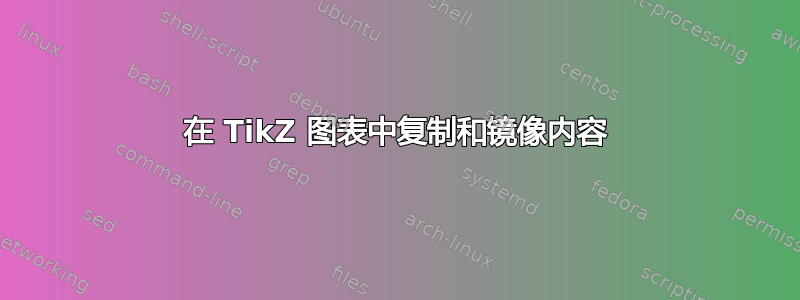
我有以下用 TikZ 制作的图表:
这是它的代码:
\documentclass[tikz,border=2mm]{standalone}
\usetikzlibrary{positioning, fit, arrows.meta}
\begin{document}
\begin{tikzpicture}[
prod/.style={circle, draw, inner sep=0pt, fill=black!5, black!20},
ct/.style={circle, draw, inner sep=5pt, ultra thick, minimum width=10mm, fill=black!5, black!20},
ft/.style={circle, draw, minimum width=8mm, inner sep=1pt, fill=black!5, black!20},
filter/.style={circle, draw, minimum width=7mm, inner sep=1pt, fill=black!5, black!20},
mylabel/.style={font=\scriptsize\sffamily},
>=LaTeX
]
\node[ct, label={[mylabel, black!20]Memory cell}, fill=black!5] (ct) {};
\node[filter, right=of ct, fill=black!5] (int1) {$f_g$};
\node[prod, right=of int1, fill=black!5] (x1) {$\times$};
\node[right=of x1] (ht) {$h_t$};
\node[prod, left=of ct, fill=black!5] (x2) {$\times$};
\node[filter, left=of x2, fill=black!5] (int2) {$f_h$};
\node[prod, below=5mm of ct, fill=black!5] (x3) {$\times$};
\node[ft, below=5mm of x3, label={[mylabel, black!20]right:Forget gate}, fill=black!5] (ft) {$f_t$};
\node[ft, above=of x2, label={[mylabel, black!20]left:Input gate}, fill=black!5] (it) {$f_t$};
\node[ft, above=of x1, label={[mylabel, black!20]left:Output gate}, fill=black!5] (ot) {$f_t$};
\foreach \i/\j in {int2/x2, x2/ct, ct/int1, int1/x1, x1/ht, it/x2, ct/it, ct/ot, ot/x1, ft/x3}
\draw[->, black!20] (\i)--(\j);
\draw[->, black!20] (ct) to[bend right=45] (ft);
\draw[->, black!20] (ct) to[bend right=30] (x3);
\draw[->, black!20] (x3) to[bend right=30] (ct);
\node[fit=(int2) (it) (ot) (ft), draw, inner sep=0pt] (fit) {};
\draw[<-] (fit.west|-int2) coordinate (aux)--++(180:7mm) node[left]{$x_t$};
\draw[<-, black!20] ([yshift=1mm]aux)--++(135:7mm);
\draw[<-, black!20] ([yshift=-1mm]aux)--++(-135:7mm);
\draw[<-] (fit.north-|it) coordinate (aux)--++(90:7mm) node[above]{$x_t$};
\draw[<-, black!20] ([xshift=1mm]aux)--++(45:7mm);
\draw[<-, black!20] ([xshift=-1mm]aux)--++(135:7mm);
\draw[<-] (fit.north-|ot) coordinate (aux)--++(90:7mm) node[above]{$x_t$};
\draw[<-, black!20] ([xshift=1mm]aux)--++(45:7mm);
\draw[<-, black!20] ([xshift=-1mm]aux)--++(135:7mm);
\draw[<-] (fit.south-|ft) coordinate (aux)--++(-90:7mm) node[below]{$x_t$};
\draw[<-, black!20] ([xshift=1mm]aux)--++(-45:7mm);
\draw[<-, black!20] ([xshift=-1mm]aux)--++(-135:7mm);
\end{tikzpicture}
\end{document}
现在,我正尝试“镜像”所有内容,如下图所示。这可能吗?(不要介意镜像的字母,我不希望它们被镜像,只希望框内的圆圈和箭头的结构被镜像)。
首先,我甚至无法创建第二个图表,使其显示在第一个图表下方。我尝试使用外部 for 循环,但根本不起作用。
编辑:由于符号 1 在下面提供了一个很好的答案,即使用 \Spy 创建范围的副本,我想改进我的问题并补充说我更希望能够在两个块之间绘制箭头(如我的手绘图片中红色所示)。我尝试在拥有 Spy 制作的副本时查找有关如何执行此操作的信息,但找不到任何东西。也许这是不可能的?
答案1
您可以通过以下方式免费获取范围副本\spy
\documentclass[tikz,border=2mm]{standalone}
\usetikzlibrary{positioning, fit, arrows.meta,spy}
\begin{document}
\begin{tikzpicture}[
prod/.style={circle, draw, inner sep=0pt, fill=black!5, black!20},
ct/.style={circle, draw, inner sep=5pt, ultra thick, minimum width=10mm, fill=black!5, black!20},
ft/.style={circle, draw, minimum width=8mm, inner sep=1pt, fill=black!5, black!20},
filter/.style={circle, draw, minimum width=7mm, inner sep=1pt, fill=black!5, black!20},
mylabel/.style={font=\scriptsize\sffamily},
>=LaTeX
]
\begin{scope}[spy scope]
\node[ct, label={[mylabel, black!20]Memory cell}, fill=black!5] (ct) {};
\node[filter, right=of ct, fill=black!5] (int1) {$f_g$};
\node[prod, right=of int1, fill=black!5] (x1) {$\times$};
\node[right=of x1] (ht) {$h_t$};
\node[prod, left=of ct, fill=black!5] (x2) {$\times$};
\node[filter, left=of x2, fill=black!5] (int2) {$f_h$};
\node[prod, below=5mm of ct, fill=black!5] (x3) {$\times$};
\node[ft, below=5mm of x3, label={[mylabel, black!20]right:Forget gate}, fill=black!5] (ft) {$f_t$};
\node[ft, above=of x2, label={[mylabel, black!20]left:Input gate}, fill=black!5] (it) {$f_t$};
\node[ft, above=of x1, label={[mylabel, black!20]left:Output gate}, fill=black!5] (ot) {$f_t$};
\foreach \i/\j in {int2/x2, x2/ct, ct/int1, int1/x1, x1/ht, it/x2, ct/it, ct/ot, ot/x1, ft/x3}
\draw[->, black!20] (\i)--(\j);
\draw[->, black!20] (ct) to[bend right=45] (ft);
\draw[->, black!20] (ct) to[bend right=30] (x3);
\draw[->, black!20] (x3) to[bend right=30] (ct);
\node[fit=(int2) (it) (ot) (ft), draw, inner sep=0pt] (fit) {};
\draw[<-] (fit.west|-int2) coordinate (aux)--++(180:7mm) node[left]{$x_t$};
\draw[<-, black!20] ([yshift=1mm]aux)--++(135:7mm);
\draw[<-, black!20] ([yshift=-1mm]aux)--++(-135:7mm);
\draw[<-] (fit.north-|it) coordinate (aux)--++(90:7mm) node[above]{$x_t$};
\draw[<-, black!20] ([xshift=1mm]aux)--++(45:7mm);
\draw[<-, black!20] ([xshift=-1mm]aux)--++(135:7mm);
\draw[<-] (fit.north-|ot) coordinate (aux)--++(90:7mm) node[above]{$x_t$};
\draw[<-, black!20] ([xshift=1mm]aux)--++(45:7mm);
\draw[<-, black!20] ([xshift=-1mm]aux)--++(135:7mm);
\draw[<-] (fit.south-|ft) coordinate (aux)--++(-90:7mm) node[below]{$x_t$};
\draw[<-, black!20] ([xshift=1mm]aux)--++(-45:7mm);
\draw[<-, black!20] ([xshift=-1mm]aux)--++(-135:7mm);
\spy [blue, size=10cm]on(0,0)in node[transform shape,yscale=-1]at(0,10);
\end{scope}
\end{tikzpicture}
\end{document}





